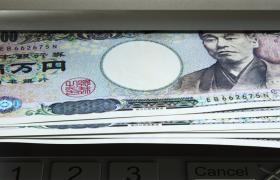Quick Contact

14th May 2019
Last Friday the US imposed some hefty new tariffs on Chinese imports into the US. As you can imagine, China wasn’t too pleased about that, and this morning we woke to news of their retaliation. The AUD didn’t take too kindly to this news and, as a result, experienced a decline in value. With this in mind, one Aussie dollar will buy you:
0.6753 US dollars
72.5474 Japanese yen
0.5929 euros
0.5146 Great British pound
0.8799 Canadian dollars
1.0209 New Zealand dollars
0.8968 Singapore dollars
If you’re purchasing your foreign currency soon, we recommend adding Rate Guard to your transaction in store for some peace of mind. It’s free, and if the rate improves within 14 days of purchase, we will refund you the difference*.
US/China trade war - it has well and truly hit the fan
On Friday at 2.01pm, the US increased tariffs on US$200 billion worth of Chinese imports into the US from 10% to 25%. China seemingly stewed over it on the weekend and thought ‘stuff it’, so this morning they slapped back by raising the tariff to 25% on US$60billion worth of imports into China. China has vowed to ‘never surrender’, putting forward three key demands to end the trade war.
Demand 1 - US to remove all tariffs on Chinese goods.
We can straight up say this is never gonna happen, especially with Trump at the wheel.
Demand 2 - The number of goods the Chinese ‘must’ purchase from the US needs to be realistic.
This one is actually pretty reasonable. In the current trade deal, the US is asking China to purchase more goods than the US can produce without severely impacting global supply chains. In doing this, the US is asking China to change the status of their economy from a net creditor to a new debtor. This means their net international investment position would change from positive to negative, or their liabilities would be greater than their assets. Currently, it is the other way around.
In addition to this, China and the US don’t really want the same things. The US wants China to buy aircrafst and China was the US to buy more electronics. Neither party really wants what the other is offering, which is a little problematic.
Demand 3 - China’s sovereignty and dignity must be preserved
Currently, US negotiators are demanding that China pass specific laws that will allow foreign companies foreign recourse (protection and help) in China if any intellectual property is stolen. China has come back saying that passing said law at the demand of a foreign power is a violation of its sovereignty (power and authority).
So yeah, that’s that. At this stage, it is pretty up in the air with markets unsure of what is to follow. What we do know is that Trump is going to meet Chinese President Xi at the G-20 Summit in Osaka at the end of June.
As you can probably imagine, a drastic increase in tariffs coupled with no resolution in sight doesn’t bode particularly well for global economic growth and trade.
Market appetite has become increasingly risk-averse, therefore putting some substantial downward pressure on the value of the Aussie dollar and other ‘risky’ currencies. This also means that ‘safe haven’ currencies that flourish when the market environment is volatile have seen a boost in their value, namely the USD and Japanese Yen. So, not only does Japan have ramen, robots and matcha ice cream right now, they also have a strong currency. Talk about overachievers.
There is now talk of markets entering a period of weak risk appetite, and in turn, weak appetite for the Aussie dollar, as they expect a prolonged stalemate. Kinda like when the two armies in Game of Thrones just stand there and face each other for a while, waiting for the other to shoot a spear or launch a dragon.
Domestic Data - April Business Confidence Survey
Today the NAB April business confidence survey was released. Markets were looking to the employment component as it is considered a good predictor for employment growth. This is quite important at the moment, as employment growth has a strong impact on the Reserve Bank of Australia’s (RBA) interest rate decisions.
Today’s report showed that business conditions, consumer confidence and forward orders were below average. There was also a sharp decline in the employment index to a below average figure.
All of these corroborate with the continued weakness we have seen in the Australian economy, and is further reason behind a potential RBA interest interest cut in the near future.
Brexit - it’s still a thing
Finally, Brexit is still a thing that is happening. Negotiations continue to drag as Prime Minister Theresa May tries to re-open talks with the European Union. Meanwhile, she is also under pressure to call off cross-party talks with Labour after a group of conservatives issues a pretty strongly worded warning against any deal involving a customs union.
Neither side of parliament is overly optimistic that they will find a deal that would reach a majority in parliament.
Oh, and the EU elections are coming up next week on the 23rd May, so that could throw another spanner in the works.
Long story short, Brexit is still super dull, and they haven’t done anything despite being told by the EU to do something to avoid another extension on their deadline.
Anyway, why not sign up for the Travel Money Club and go in the running to win $500* each month? We can guarantee that winning $500 would do more for your travel money than any trade war decision.
Definitions for those of us playing at home
Risk-Off v Risk-On Theory
This refers to changes in investment activity based on the level of risk tolerance in the market. If the risk is perceived to be low (risk-on) the theory states that investors are more willing to engage in higher-risk investments. Likewise, when the risk is perceived to be high (risk-off), investors will seek lower-risk investments. The Aussie dollar is considered to be a higher-risk investment, so it’s value will generally increase during risk-on moods when risk appetite is high.
This blog is provided for information only and does not take into consideration your objectives, financial situation or needs. You should consider whether the information and suggestions contained in any blog entry are appropriate for you, having regard to your own objectives, financial situation and needs. While we take reasonable care in providing the blog, we give no warranties or representations that it is complete or accurate, or is appropriate for you. We are not liable for any loss caused, whether due to negligence or otherwise, arising from the use of, or reliance on, the information and/or suggestions contained in this blog. All rates are quoted from the Travel Money Oz website and are valid as of 14 May 2019.*Terms and conditions apply to Rate Guard. Seehttps://www.travelmoneyoz.com/rate-guard for more information. *Be in to WIN with the Travel Money Club. For full terms and conditions click here.












